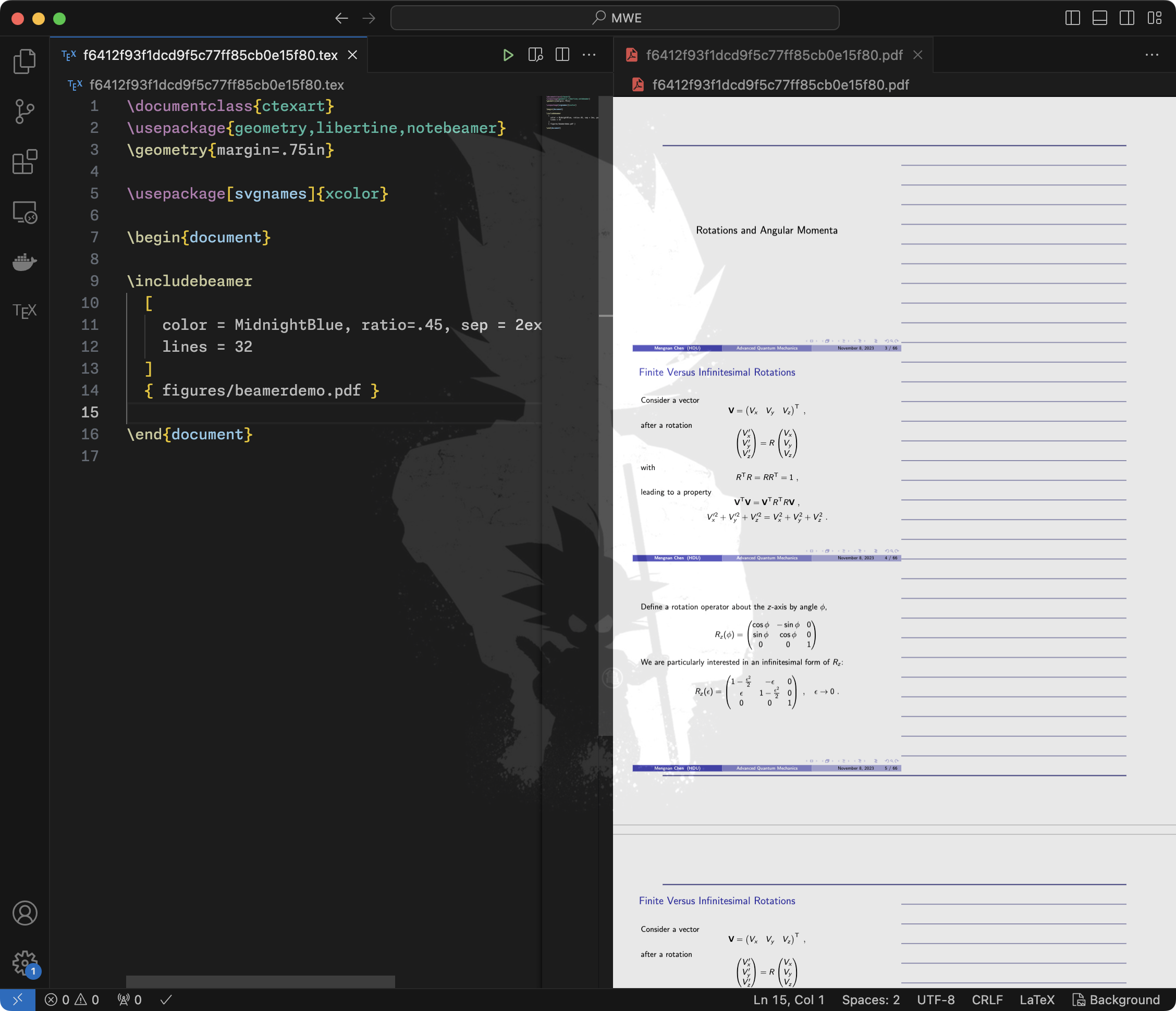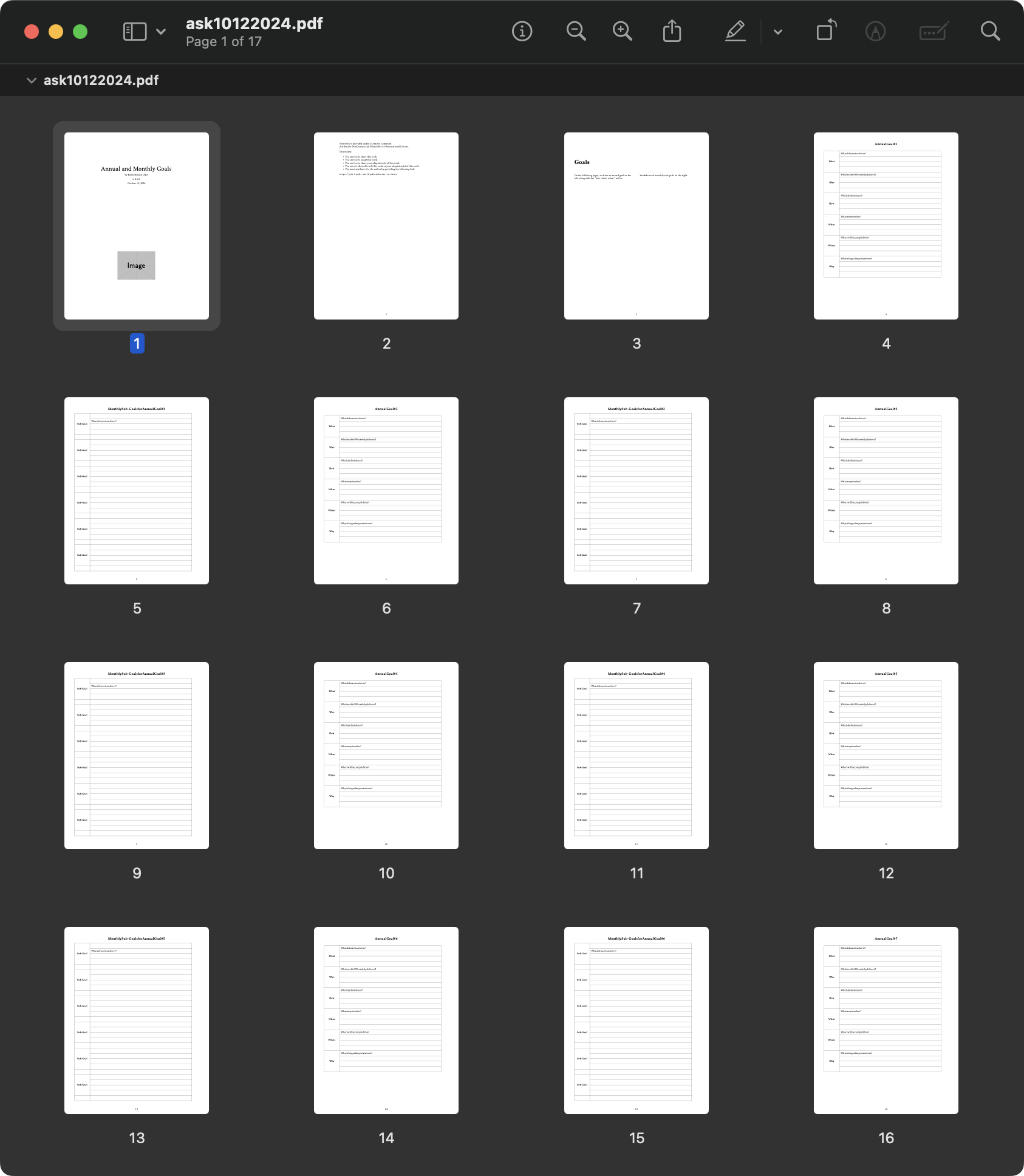hook 很容易的,无论你使用 2e 提供的也好还是 3 提供的也好:
\hook_gput_code:nnn {<hook>} {<label>} {<commands>}没必要重新定义几个标题命令.
hook 很容易的,无论你使用 2e 提供的也好还是 3 提供的也好:
\hook_gput_code:nnn {<hook>} {<label>} {<commands>}没必要重新定义几个标题命令.
Hope this may help u: using l3bool

\documentclass[AutoFakeBold, oneside,a4paper,12pt]{ctexbook}
\makeatletter
\ExplSyntaxOn
\bool_new:N \l_@@_chapter_afterskip_bool
\hook_gput_code:nnn { cmd / chapter / before } {.}
{ \bool_gset_true:N \l_@@_chapter_afterskip_bool }
\hook_gput_code:nnn { cmd / @startsection / before } {.}
{ \bool_if:NT \l_@@_chapter_afterskip_bool { \vskip -2em } }
% 使用 vskip: 否则 chapter 后紧挨着的正文结尾、和接下来第一个 section 标题
% 之间距离会变小甚至重叠
\DeclareDocumentCommand \banchapterskip {}
{ \bool_gset_false:N \l_@@_chapter_afterskip_bool }
\ExplSyntaxOff
\makeatother
\ctexset{
secnumdepth = 3,
chapter = {
name = {}, break = ,
number = \arabic{chapter},
format+ = \zihao{-2}\heiti,
aftername = \,\,\,,
beforeskip = -1.5em,
afterskip = 3.3em
},
section = {
format = \zihao{4}\heiti,
nameformat+ = \zihao{4}\heiti,
aftername = \,\,\,,
titleformat = \zihao{4}\heiti,
beforeskip = 0.3em,
afterskip = 0.1em,
aftertitle+ = \banchapterskip
},
subsection = {
format = \zihao{-4}\heiti,
nameformat+ = \zihao{-4}\heiti,
aftername = \,\,\,,
titleformat = \zihao{-4}\heiti,
beforeskip = 0em,
afterskip = 0.62em
},
subsubsection = {
format = \zihao{-4}\heiti,
nameformat+ = \zihao{-4}\heiti,
aftername = \,\,\,,
titleformat = \zihao{-4}\heiti,
beforeskip = 0ex,
afterskip = 0ex
}
}
\begin{document}
\chapter{这是章标题这是章标题这是章标题}
\section{SECTION-SECTION-SECTION-SECTION}
\subsection{SUBSECTION-SUBSECTION-SUBSECTION-SUBSECTION}
\subsubsection{SUBSUBSECTION-SUBSUBSECTION-SUBSECTION-SUBSECTION}
\vspace{3em}
\chapter{这是章标题这是章标题这是章标题}
正文正文正文正文正文正文正文正文正文正文正文正文正文正文正文正文正文正文正文正文正文正文正文正文正文正文正文正文正文正文正文正文正文正文正文正文正文正文正文正文正文正文正文正文正文正文正文正文正文正文正文正文正文正文正文正文正文正文正文正文正文正文正文正文正文正文
\section{SECTION-SECTION-SECTION-SECTION}
正文正文正文正文正文正文正文正文正文正文正文正文正文正文正文正文正文正文正文正文正文正文正文正文正文正文正文正文正文正文正文正文正文正文正文正文正文正文正文正文正文正文正文正文正文正文正文正文正文正文正文正文正文正文正文正文正文正文正文正文正文正文正文正文正文正文
\subsection{SUBSECTION-SUBSECTION-SUBSECTION-SUBSECTION}
正文正文正文正文正文正文正文正文正文正文正文正文正文正文正文正文正文正文正文正文正文正文正文正文正文正文正文正文正文正文正文正文正文正文正文正文正文正文正文正文正文正文正文正文正文正文正文正文正文正文正文正文正文正文正文正文正文正文正文正文正文正文正文正文正文正文
\subsubsection{SUBSUBSECTION-SUBSUBSECTION-SUBSECTION-SUBSECTION}
正文正文正文正文正文正文正文正文正文正文正文正文正文正文正文正文正文正文正文正文正文正文正文正文正文正文正文正文正文正文正文正文正文正文正文正文正文正文正文正文正文正文正文正文正文正文正文正文正文正文正文正文正文正文正文正文正文正文正文正文正文正文正文正文正文正文
\end{document}补充一句:这种图专业称为 量子线路(Quantum Circuit),其实有更加专业的宏包处理这种图,见 TSE 上的回答
具体实操本人暂不做了,因为电脑最近送修了 :-)
谢邀. 在这里主要介绍下查找思路:
首先编译你的这个 MWE,而后会生成一个 *.bbl 文件,这个是可以直观的查看最终 PDF 输出的内容的,发现里面:
\bibitem{满红2014CSTR}
满红.
CSTR过程的模型辨识及其非线性预测控制方法研究~[D].
[S.~l.]: 大连理工大学, 2014.根据你的要求,那么我们检索 S.~l.,发现 *.bst 里 140 行
FUNCTION {bbl.sine.loco} { language empty$ { "S.~l." } { "出版地不详" } if$ }得知这个输出由函数 bbl.sine.loco 控制,那么我们就搜索这个函数,这时会在额外 5 处搜到(可能对应不同的 if 判断,实测只有第 1861 行有效)
1860 -- 1862 行原始如下:
address empty$
{
"[" bbl.sine.loco * "]" * bbl.colon * % 无出版地
school empty$很好理解,意思就是
"[" bbl.sine.loco * "]" * bbl.colon
左方括号 S.~l. 右方括号 冒号刚好和你的截图对应. 这几行处理后如下
address empty$
{
% "[" bbl.sine.loco * "]" * bbl.colon * % 无出版地
"" school empty$注意到在注释掉这个function同时,还要在 school empty$ 前加 "",否则会报错(你理解为“助动词”好了)
不过其他基础我也给你改了,改好的 *.bst 见附件.

在给你保留原汁原味的情况下,给你通过编译了,下次提供 MWE 不要搞这么长
\documentclass[fontset = fandol]{ctexbook}
\usepackage{zhlipsum}
\usepackage{titletoc}
\usepackage{titlesec}
\usepackage{geometry}
\usepackage{xcolor}
\usepackage{pagecolor}
\usepackage{layout}
\usepackage{chemfig,subcaption,graphicx,float}
\usepackage{listings}
\definecolor{background}{RGB}{215, 247, 250}
\definecolor{藏花红}{RGB}{236,45,122}
\definecolor{石绿}{RGB}{87,195,194}
\geometry{a4paper,centering,scale=0.9}
%自定义“目录名称”
\renewcommand{\contentsname}{\hfill\songti\bfseries\LARGE 文章目录 \hfill
}
\newfontfamily\codefont{Times New Roman}
\setcounter{chapter}{-1} % 初始化为-1,使第一个章节显示
\ctexset{
chapter = {
name = {\S}, % 将"第X章"改为"§ X"
number = \arabic{chapter}, % 阿拉伯数字编号
format = \songti\large\bfseries\centering, % 标题格式
beforeskip = 2.5ex, % 标题前间距
afterskip = 2.5ex, % 标题后间距
}
}
% 针对章(chapter)的目录格式
\titlecontents{chapter}[0pt] % 作用对象:章
{\songti\bfseries} % 全局格式:间距+右对齐+粗体
{\thecontentslabel} % 带编号格式
{} % 无编号格式(空)
{\titlerule*[8pt]{.}\contentspage} % 页码引导符+页码
\titleformat{\section}[frame]
{\color{藏花红}}
{\centering
\footnotesize
\enspace 节 \thesection\enspace}
{8pt}
{\bfseries\filcenter\songti}
[\vspace{-10pt}]
% 代码排版配置
% 自定义VBA语法高亮
\lstdefinelanguage{VBA}{
morekeywords={Sub, End, Dim, As, Set, Range, Worksheet, MsgBox,
If, Then, Else, For, Next, Do, While, Loop, Integer, String},
sensitive=true,
morecomment=[l]{'}, % 单行注释
morestring=[b]{"}, % 字符串定义
keywordstyle=\codefont\color{blue},
stringstyle=\codefont\color{red},
basicstyle=\codefont\small,
keepspaces=true,
numbers=left,
% 边距控制
xleftmargin=2em, % 左边界距
xrightmargin=2em, % 右边界距
framexleftmargin=1em, % 框线左间距
framexrightmargin=1em, % 框线右间距
columns=fullflexible
}
\lstset{
language=VBA,
backgroundcolor=\color{gray!10},
escapeinside=``, % 中文注释处理
}
\begin{document}
\title{XVBA教程}
\author{吕旋延}
\date{\today}
\maketitle
\tableofcontents
\chapter{哈哈哈}
\section{初步}
\begin{lstlisting}[caption={生成斐波那契数列},label={code:fib}]
'`斐波那契数列生成函数`
Sub GenerateFibonacci()
Dim n As Integer
Dim i As Integer
Dim fib() As Long
n = InputBox("请输入数列项数:", "输入", 10)
ReDim fib(n)
fib(0) = 0
fib(1) = 1
For i = 2 To n - 1
fib(i) = fib(i - 1) + fib(i - 2)
Next i
'`输出结果`
MsgBox "前" & n & "项斐波那契数列:" & vbCrLf & Join(fib, ", ")
End Sub
\end{lstlisting}
\end{document}PDF 的问题,如 @u40 老师所说:
我的解决方案就是pdf2ps SDUlogo.pdfepstopdf SDUlogo.ps然后就OK了
或者 Inkscape / AI 重新导出,也能解决问题.
我尝试了使用
gs -o <output.pdf> sDEVICE=pdfwrite <input.pdf>以及
mutool clean -a -z -d -gggg <input.pdf> <output.pdf>均无法修复,此问题可能涉及在以前 dvipdfm-x 程序导致 Inkscape 导出的 PDF 插入后使用 xelatex 编译透明度失效,后被 @马起园 老师修复,但是又牵扯进来新的问题. 当然也不一定是这个问题导致的. 想要引擎层面彻底解决,需要比对处理前后的PDF,找出是什么导致了这个问题?并提交 Issue(前提是,如果是某段inputstream 导致,那只能硬着头皮提交了,把分析工作交给他们...)
你只有 \begin,没有 \end,当然编译出不来啊...

\documentclass{ctexart}
\usepackage{mathtools}
\title{二队关于插值的理解(主要来源于司守奎老师)}
\author{二队\and 为啥\thanks{这次我了解到并知道怎么会用脚注了}
\and 就是
\and 就是就是}
\date{\today}
\begin{document}
\[
l_0(x) =
\begin{cases}
\frac{(x - x_1)}{x_0 - x_1}, & x \in [x_0,x_1] \\
0, & \text{其他}
\end{cases}
\]
\end{document}或者你可以用 parabola 路径绘制抛物线,然后在同一条路径中绘制椭圆弧,然后再绘制抛物线返回原点,这样效果或许会更好些.

这个 solution 的方案见最下方代码的上半部分的 tikzpicture 环境
添加 line cap = round,然后根据你画的抛物线 1/16*pow(8, 2),那么切点坐标是 8^2/16 = 4,那么椭圆的半长州值我也给你改了改,拼合痕迹没了.
但是还是会相交一点,这个问题是数学问题,俾人数学能力有限,你可以请教下数学方面的同学(比如改用别的曲线)
\documentclass[tikz, border = 10pt]{standalone}
\begin{document}
\begin{tikzpicture}[scale = .5]
\draw (8,0) ellipse (.4 and 4);
\draw [ line join = round ] (0,0) parabola (8,4) arc (90:-90:.4 and 4) parabola bend (0,0) (0,0) -- cycle;
\end{tikzpicture}
\begin{tikzpicture}[scale = .5]
\draw[domain=0:8, smooth, variable=\x, line cap = round] plot ({\x}, {1/16*pow(\x, 2)});
\draw[domain=0:8, smooth, variable=\x, line cap = round] plot ({\x}, {-1/16*pow(\x, 2)});
\draw (8,0) ellipse (.4 and 4);
\end{tikzpicture}
\end{document}只画一个,后面的你可以选择套用循环,或者复制粘贴
\documentclass{ctexart}
\usepackage{tikz}
\begin{document}
\begin{tikzpicture}
\node [ circle, draw ] (a) {};
\node [ circle, draw, fill, xshift = 1cm ] (b) at (a) {};
\node [ circle, draw, fill, shift = {({sin(18)}, {cos(18)})} ] (c) at (b) {};
\node [ circle, draw, fill, shift = {({-cos(36)}, {sin(36)})} ] (d) at (c) {};
\node [ circle, draw, fill, shift = {({-cos(36)}, {-sin(36)})} ] (e) at (d) {};
\draw (a) -- (b) -- (c) -- (d) -- (e) -- (a);
\end{tikzpicture}
\end{document}可以像 xcolor 那样 $(B)!0.5!(D)$,当然由于需要运算模式 $$ 包裹,tikz 的 calc 库是需要被调用的
The following is an example:
\documentclass{article}
\usepackage{tikz}
\usetikzlibrary{calc}
\begin{document}
\begin{tikzpicture}
\coordinate [label = right: $B$] (B) at (1,3);
\coordinate [label = right: $D$] (D) at (2,4);
\coordinate [label = right: $E$] (E) at ($(B)!0.5!(D)$);
\end{tikzpicture}
\end{document}这是2e的版本,请参考CTAN上的User's manual: notebeamer
截图中的 expl3 使用命令方式重制版暂未发布,请等待更新.
Update on 11:40, 15/10/2024: Version 4.1A已发布
Archive.zip

\textbf{...\\...},给你改过来了example-image 给你替代了,记得改过来expl3 的 int_step_inline 给你重写了 [其实 \foreach 貌似也可以,但这应该是我的职业病 :)] 里面 #1 代表变量,你可以自己在这个基础上改.geometry 给你改了,不然好几页表格都塞不下 :(The following figure is a preview of the final effect

感谢群友🐟老师 ExplSyntax包定义外面即可
你可以使用caption包设置长度,不过这里我给出一种钩子的方法:
\documentclass{article}
\usepackage{lipsum,mwe}
\begin{document}
\lipsum[1]
\begin{figure}[!htbp]
\begin{minipage}{.48\linewidth}
\centering
\includegraphics[width=0.5\linewidth]{example-image}
\caption{Captiona}
\end{minipage}
\begin{minipage}{.48\linewidth}
\centering
\includegraphics[width=0.5\linewidth]{example-image}
\caption{Captionb}
\end{minipage}
\end{figure}
\lipsum[2]
\clearpage
\AddToHook{cmd/endfigure/before}{\vspace{-2.5ex}}
\lipsum[1]
\setlength{\belowcaptionskip}{-10em}
\begin{figure}[!htbp]
\begin{minipage}{.48\linewidth}
\centering
\includegraphics[width=0.5\linewidth]{example-image}
\caption{Captiona}
\end{minipage}
\begin{minipage}{.48\linewidth}
\centering
\includegraphics[width=0.5\linewidth]{example-image}
\caption{Captionb}
\end{minipage}
\end{figure}
\lipsum[2]
\end{document} 
问 如何实现章节标题后根据是否直接接正文自动插入额外垂直间距?